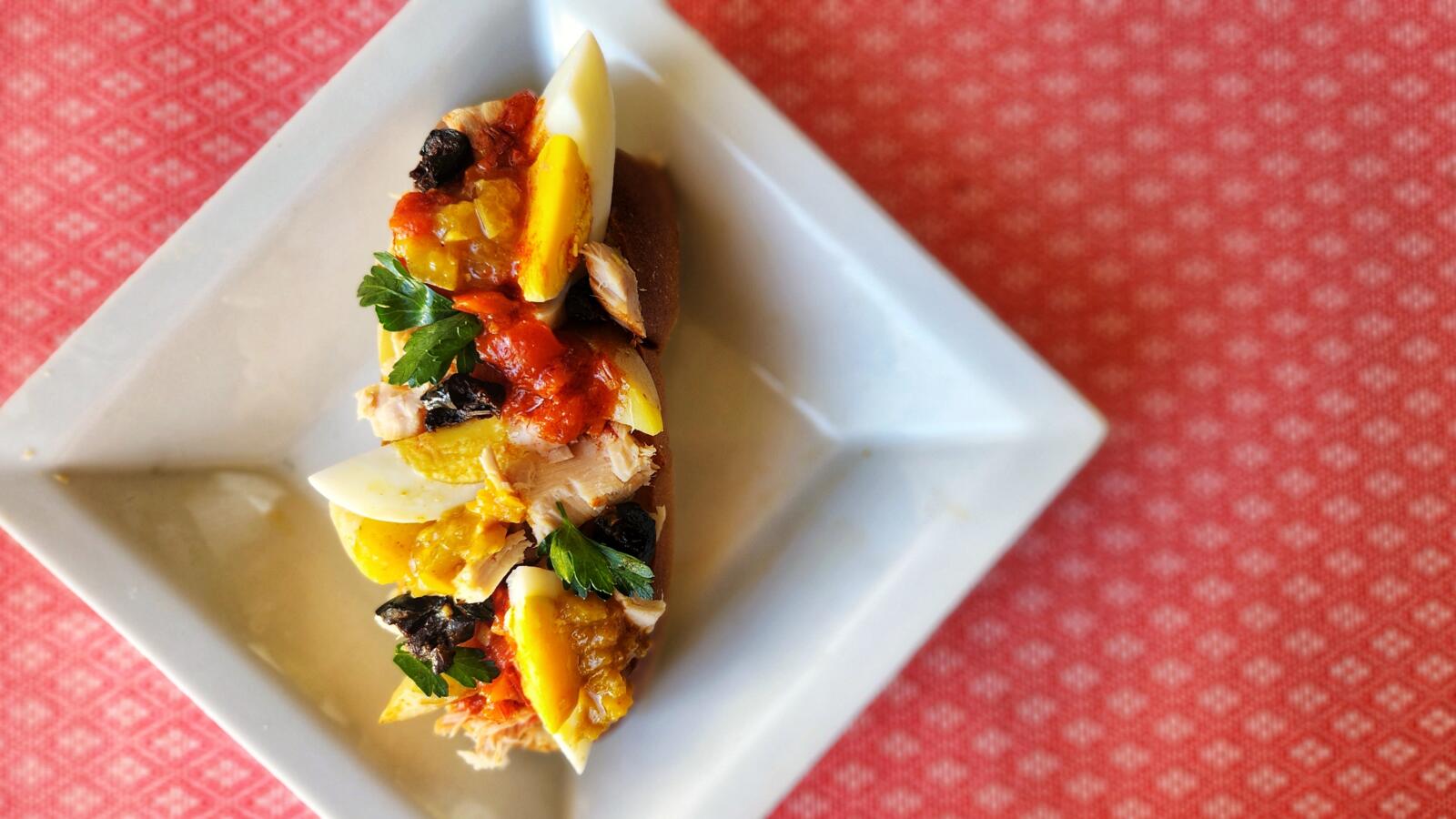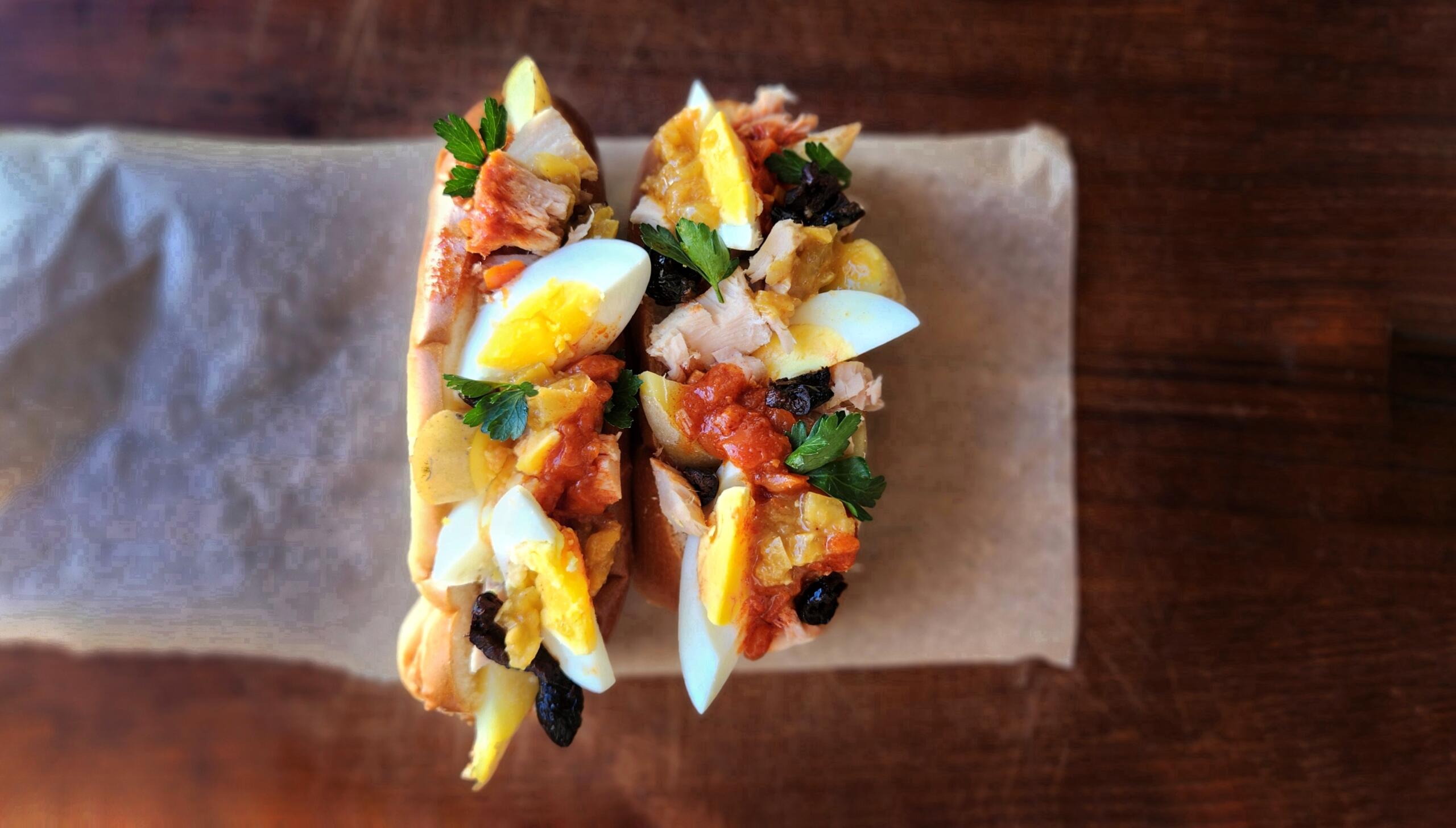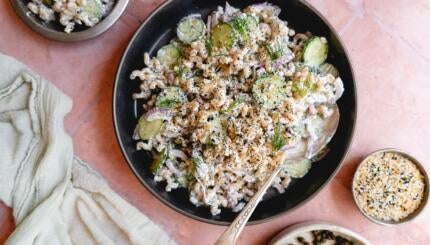A fricassée Tunisian is an amped-up tuna sandwich served on a fried roll that you can get your hands on pretty much anywhere there are Tunisians cooking. The overstuffed street food is made with oil-cured tuna, salty preserved lemon, bright red harissa, hard-boiled eggs, boiled potato and briny olives. It’s a filling, fiery, salty, umami-rich casse-croûte (snack) that you can make at home.
Today, a fricassée is synonymous with secular Tunisia, but the two-bite delight has its roots firmly in Jewish cuisine.
There have been Jews in North Africa — and in particular Tunisia — since ancient times, with the Diaspora moving people in and out, up to Europe and over to the Middle East. With every move, they took their food with them, which explains how this sandwich is available everywhere from Tunis to Tel Aviv, Paris to Toronto.
Where did it originate and who created it? The story goes that sometime in the 19th century, a young Jewish Tunisian woman found herself with more fried buns than she needed. She’d intended to sprinkle the buns with sugar, but she didn’t have any. Not wanting to waste, she made them savory by adding what she had around. Voila, a new dish was born and was called fricassée. (Note: It’s not related to the French stew, chicken fricassée, which is named after the cooking method.)
The Nosher celebrates the traditions and recipes that have brought Jews together for centuries. Donate today to keep The Nosher's stories and recipes accessible to all.
The crunchy fried bun essentially is an unsweetened donut (which makes it a particularly excellent sandwich at Hanukkah). Made in less than an hour, the dough is shaped into an oval and deep fried until it’s a mouthwatering golden brown, before being split and topped. You can also just use a good, crusty roll.

What makes this sandwich stand apart from run-of-the-mill tuna salad is the unique combination of ingredients. Tunisians make and eat far more of the chile paste harissa than any other country, so it’s a foregone conclusion it would be the condiment used. But as long as you have the harissa, tuna, eggs and potato, the rest is up to you. Other ingredients can include tomatoes, cucumbers, capers, Israeli-style pickles, pepperoncini and parsley.
The Jewish population in Tunisia is now a tiny fraction of what it historically has been, but with this sandwich, we’ve left our culinary stamp on the nation. If you can’t get there for a visit, making it yourself is a great alternative.
Ingredients
For the bread rolls:
- ⅔ cup warm water
- 1 Tbsp active dry yeast
- 1 tsp sugar
- 3½ cups all-purpose flour
- 1 tsp table salt
- ¼ cup olive oil
- 1 large egg, whisked
- ⅔ cup water (+ more as needed)
- oil, for frying
For the sandwich:
- ½ cup preserved lemon skin, mashed
- 4 Tbsp prepared harissa, or to taste
- 2 tsp water
- 2 cans tuna in oil, drained
- 5 fingerling potatoes, boiled and sliced lengthwise
- 4 hard-boiled eggs, peeled and sliced
- 12 pitted, dry-cured black olives, roughly chopped
- parsley, for garnish
Directions
- Start by making the rolls (if you are opting for store-bought rolls, skip to direction 8). In a small bowl, stir together the water, yeast and sugar. Set aside until foamy, which will take about 4 minutes.
- In a large bowl, stir together the flour and salt.
- Add the bloomed yeast, olive oil and egg. Stir all to combine.
- Slowly add the 2/3 cup water. It will be sticky. Knead until the dough is smooth. This may take up to 4 minutes. Cover the dough with a clean cloth and let rest for 30 minutes.
- While the dough is resting, pour enough oil into a Dutch oven so that it is 4-inches deep, then gently heat over medium.
- When the dough has rested, punch it down and roll it out on a floured surface to 1-inch thick, then cut into 6 rounds. (You will have extra dough to make more if you want.) Using your hands, gently tug at the dough into a more oval shape.
- When the oil is 365°F, add 3 ovals of dough and fry until browned. Flip and let brown on the other side. Carefully remove the dough with a slotted spoon and let cool on a paper towel. Repeat with the remaining dough.
- In a small bowl, thin the harissa with the water.
- Split your rolls open like a hot-dog bun.
- Spread the preserved lemon onto one side of the roll and the harissa onto the other. Top with tuna, potatoes, eggs and olives. Garnish with parsley and serve within an hour.



